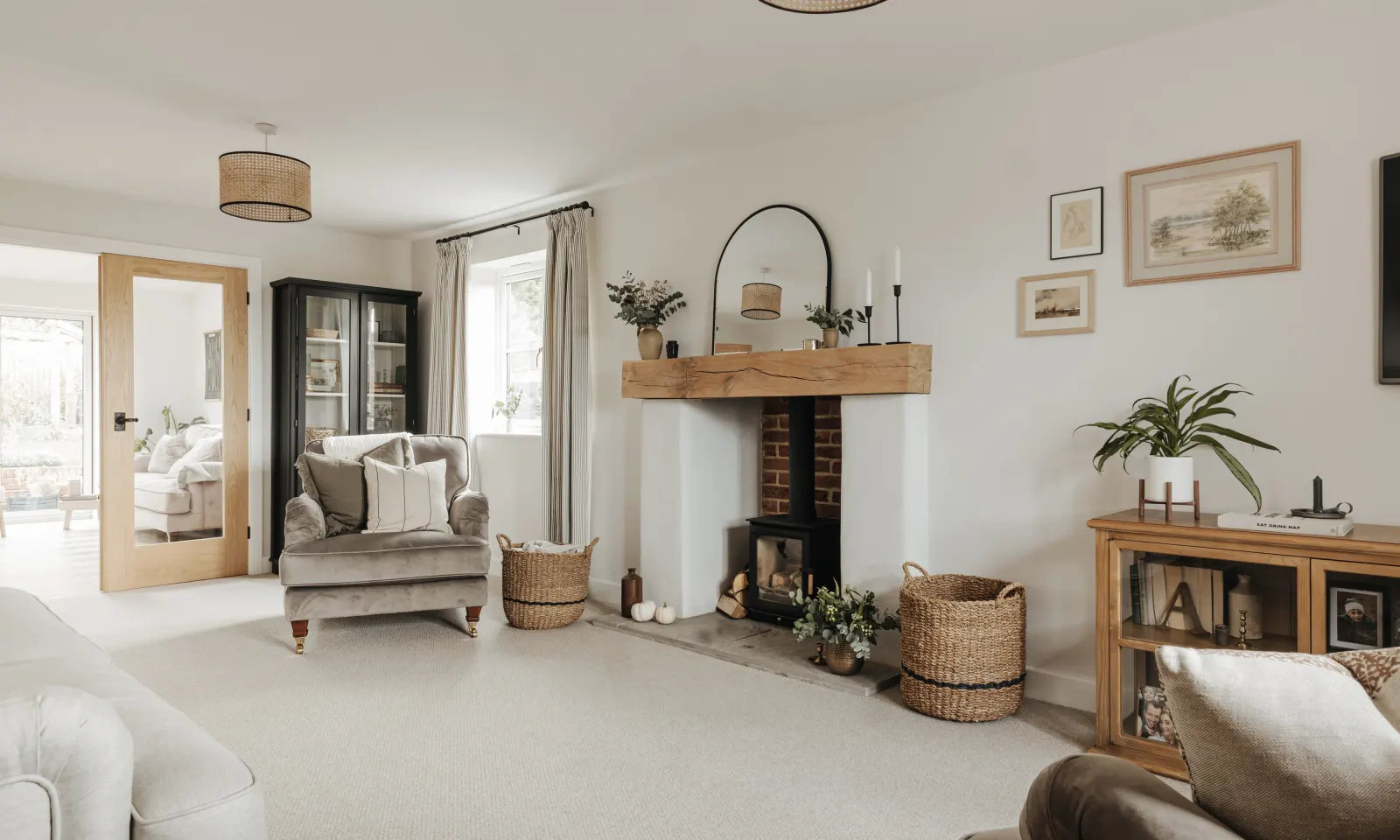How to Decorate a North Facing Room
In the Northern Hemisphere, the northern light has always been prized by artists for its clarity and consistency. Great masters such as Vermeer created their finest work in north-facing studios where an absence of direct sunlight enabled them to mix paint colours unhindered. For the rest of us however, north-facing rooms can present a major decorating dilemma. A lack of shadows and contrast can make these spaces feel dull, colours tend to look cooler and harsher, and scarce natural daylight can make them feel dark and confined. What can be done to make a north-facing space a place where you want to spend time? Here are our 4 top tips…
1. Consider function first
Some rooms work better than others when they have a north-facing aspect so if you have the luxury of deciding how such a room will be used, make sure you choose wisely. A snug or playroom is a great way of using the space as neither rely on an abundance of natural light. A snug calls for a strong or dark colour and comes alive in the evening when daylight is long gone. Bright colours, bold patterns and good lighting will ensure a playroom is inviting and well used by the younger members of the household even if sunlight isn’t streaming through the windows. When it comes to bedrooms, assign a child’s or guest room to the north of your home. These rooms are likely to be used less frequently than the main bedroom and occupied by those less appreciative of early morning or evening light!
2. Should you go light or dark?
If you’re keen to have a light scheme in a north-facing room, avoid pale colours with a cool blue or green base and instead, opt for those with a warm yellow or red base. These colours will create a warmer atmosphere and bounce available light around the space more effectively. Include strategically placed mirrors and reflective surfaces to further amplify the available light.
Another, possibly better, approach is not to fight nature and go for drama in a north-facing room instead. Strong or dark colours will create instant impact and a cocooning effect. Whatever the hue, colours with a warm base should still be chosen to provide a cosy, inviting ambience. Metallics look particularly effective against dark colours so choose these for picture frames and accessories. And don’t forget mirrors in darks schemes too for maximum drama.


3. Dress your windows effectively
Your choice of made to measure curtains or made to measure blinds will directly affect the amount of light in a room and nowhere is this more important than in a room where natural light is limited. If you want the room to be as light and airy as possible, consider sheer fabrics which will diffuse rather than block the incoming light. Hang blinds high above windows so that, when open, they don’t impede the light and ensure curtains are able to stack back neatly either side of the window. If space either side of the windows is limited, choose a curtain heading that requires less volume of fabric, meaning that the curtains take up less room when they’re open. Our wave or eyelet heading are a great choice.
If you choose to go dark and dramatic, nothing can compare to our silk or velvet curtains which ooze opulence. These fabrics look particularly beautiful in artificial light and interlined curtains will look especially sumptuous.
4. Really make your lighting work for you
Lighting is the most important design tool in any space and, if done well, will really bring a north-facing space to life. The type of lighting you choose will depend on the function of a room and when it is used. So, north facing kitchens and bathrooms will need plenty of good ‘task’ light to ensure you can see what you’re doing at any time of day. Well positioned directional downlights will do this most effectively; avoid grids of them on the ceiling and instead decide where you need the light and position the fitting accordingly.
The problem with downlights however (and with pendants in the centre of a room) is that they cast a very even, flat light which is hopeless for creating atmosphere. So, particularly in the evening, you will want to supplement the task lighting with other forms of lighting that create pools of light and shadow. It’s this ‘accent’ lighting that provides interest and atmosphere.In a kitchen, accent lighting is likely to take the form of wall lights, plinth or cabinet lighting, or pendants hung low over a table or island. Floor lamps and table lamps - the best way of introducing accent lighting in living spaces - should also be considered in kitchens if space allows.
As with all lighting, flexibility is key, so try to have different lighting circuits to alter the atmosphere at different times of day. And always, always use dimmer switches. Finally, and particularly important for north-facing rooms, choose warm white LEDs to ensure these spaces are ones you gravitate to and never want to leave!


What about south-facing rooms?
You may be one of the lucky ones with sun-filled rooms that get lots of natural light. Take a look at our top tips for decorating south-facing rooms.